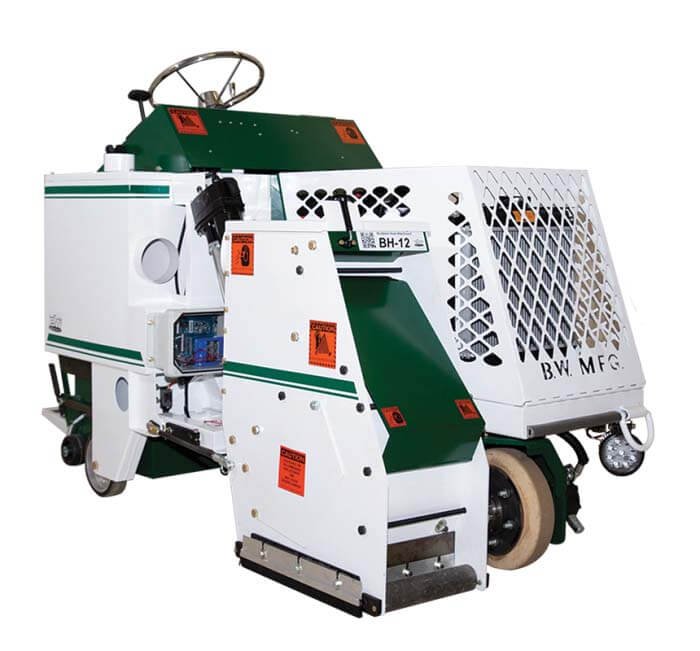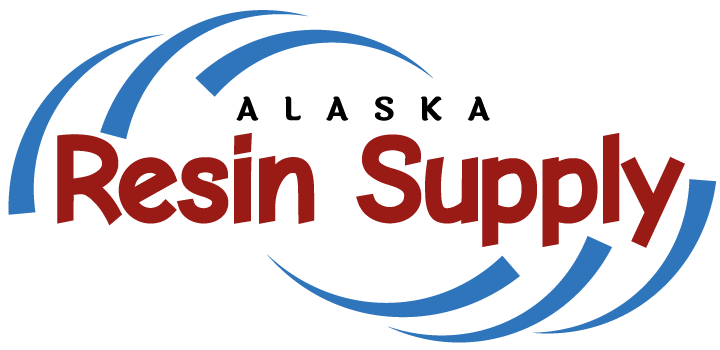Diligent homeowners are researching the best options for coating their concrete flooring. Properly prepared concrete surfaces ensure any coatings applied will adhere correctly. The longevity of any concrete coating is dependent on how well it bonds to the surface of the concrete. Meticulous and correct preparation is essential.
There are four commonly used methods to prepare concrete surfaces: Diamond Grinding, Shot Blasting, Scarification and Acid Etching,. The preparation before coating a concrete floor is also referred to as surface profiling. Achieving the correct profile can make or break the adhesion of a new concrete coating.

For professional installers, the most important factor is CSP or Concrete Surface Profile. CSP is a standardized measure for the roughness of a concrete surface. This can range from CSP-1 (smoothest) to CSP-9 (roughest). The thicker the coating system, the higher the required CSP to get a good bond. Thin coating systems do not perform well over time. Commercial coating systems are thicker for good reason—they last longer. This is why professional contractors look for a CSP-3 to CSP-9 for the best bond and performance. To achieve this, professional contractors use diamond grinding, shot blasting and scarification. When the concrete surface is too smooth, coatings bond poorly. This can cause your floor coating to fail over time. The coating may also fail to bond due to the surface not being cleaned properly from dirt, grease, oil, or chemical spills.
It is important to identify if your concrete is sealed. Sealed concrete will not allow a coating to adhere. You can do a simple test to check if your concrete is sealed—pour a cup of water on it. If it absorbs into the concrete, then the surface is not sealed. If the water sits on top of the concrete, then a sealer has been applied. A sealer will prevent any coating you apply from bonding to the concrete. It is recommended to use a Diamond Grinder or Shot Blaster to remove any sealers, glues, caulks, mastics, or previous coatings. Newly poured concrete must be profiled as well (and also must cure for 28 days before coating).
Today, most coating manufacturers no longer recommend acid etching for a multitude of reasons. The best acid etching tends to produce a CSP-1 to CSP-2 profile, which is suitable for only very thin systems. As previously discussed, thin systems have poor longevity. Acid etching results are inconsistent and unreliable. The surface can end up uneven, over-etched or under-etched. Acid etching involves the application of acid to the concrete, then rinsing it off with water. Dangerous if not done correctly—it can damage concrete and cause serious bodily harm as well. The etching process can leave behind a white powdery residue (calcium carbonate) that can cause your coating to fail. Many local and federal agencies have imposed restrictions on washing the acid solution down the floor drain, due to the risk posed to the environment. Most coating manufacturers will no longer warranty a floor prepped with acid.
Diamond grinders use rotating discs—special tooling embedded with diamonds—to clean, level and abrade the concrete surface. This allows them to remove the smooth top layer of concrete to expose the raw aggregate beneath. Grinding makes controlling the surface profile easier and ensures a consistent result. A dust containment system or “Pulse Vacuum” is used to collect the concrete dust during grinding. Diamond grinders are versatile and can be used with special tooling to provide more than a surface profile. They can be equipped for concrete polishing systems as well.
Shot blasters use centrifugal force to propel tiny steel shot at high velocity onto the concrete surface. A big advantage of shot blasting when compared to other mechanical methods is it produces very little airborne dust. The process is confined in an enclosed blast chamber that recovers and separates the dust and reusable shot. Magnet brooms are commonly used to collect any stray shot after the job is completed.
Scarifiers allow you to cut or “scar” the surface of the concrete in rows. It uses spinning blades on a drum that rotate at high speed, cutting into the top level of the concrete. These are more aggressive than a diamond grinder or shot blaster. Some models can remove as much as a quarter inch or more of concrete in one pass. These are utilized when you need to remove a large amount of the concrete surface.
When talking to your contractor, ask them which surface profile the manufacturer recommends for the material being installed. If you’re going to be paying for a quality flooring material to be installed, you should make sure that the floor is properly prepared.
Contact us today to learn more about your Professional Installation or DIY options. We have a full equipment line available for rental. You can call us at (907) 671-9900 or visit us at 201 E. Swanson Ave. Suite #1, Wasilla. If you would like a quote for your floor, go to www.AlaskaResin.com and download our Epoxy Project Quote Request Form on our Contact Page.
First Published: October 21, 2021 in The People’s Paper – Article Link
